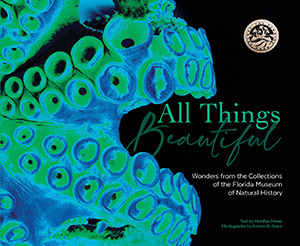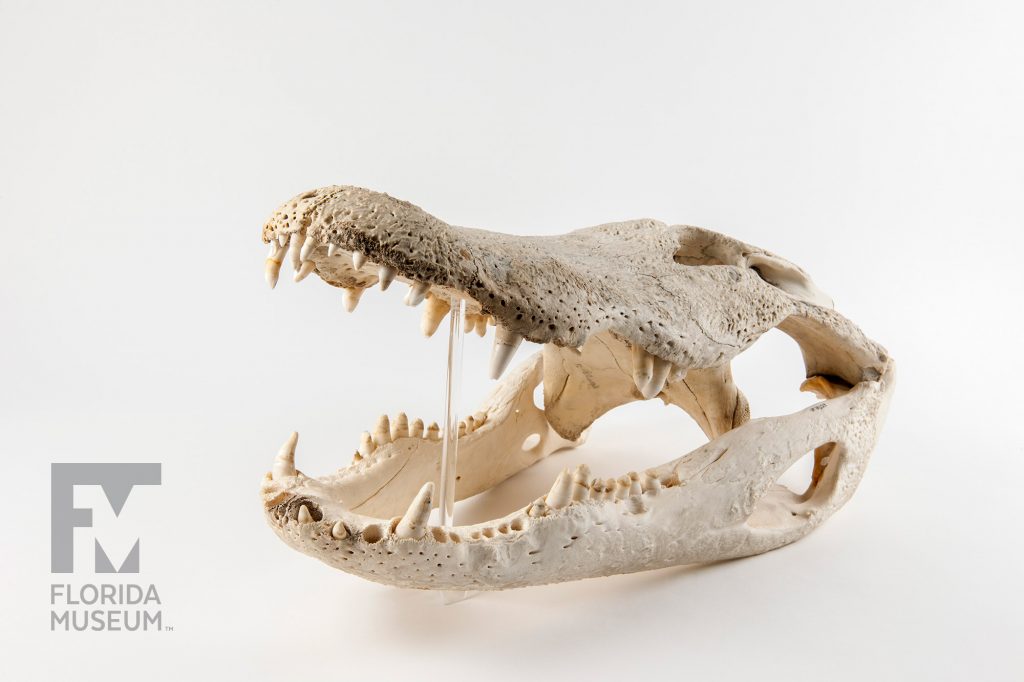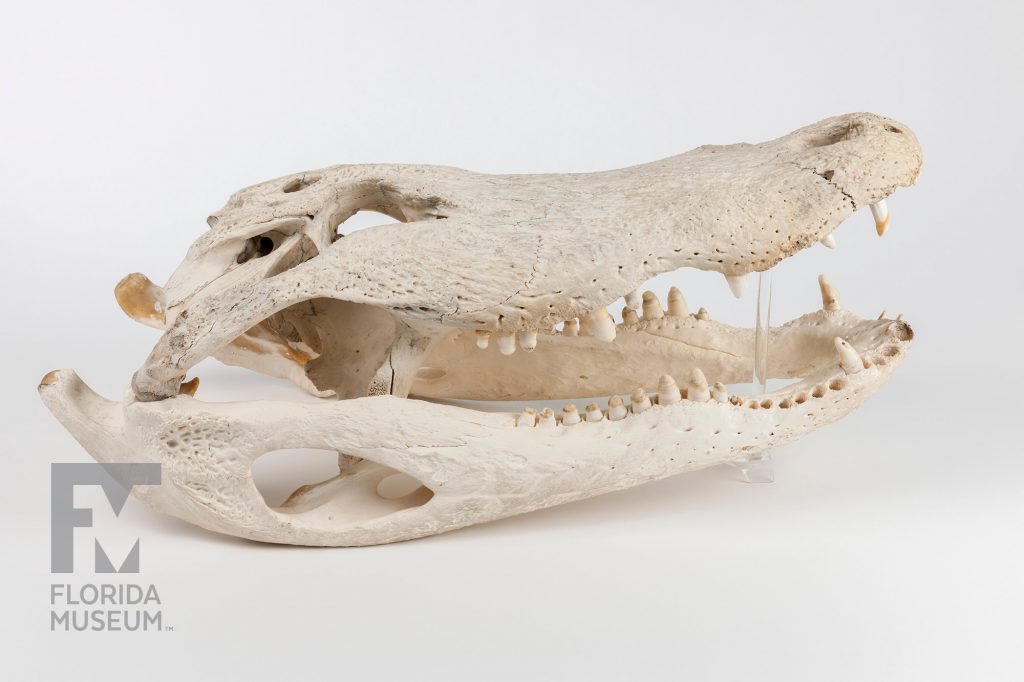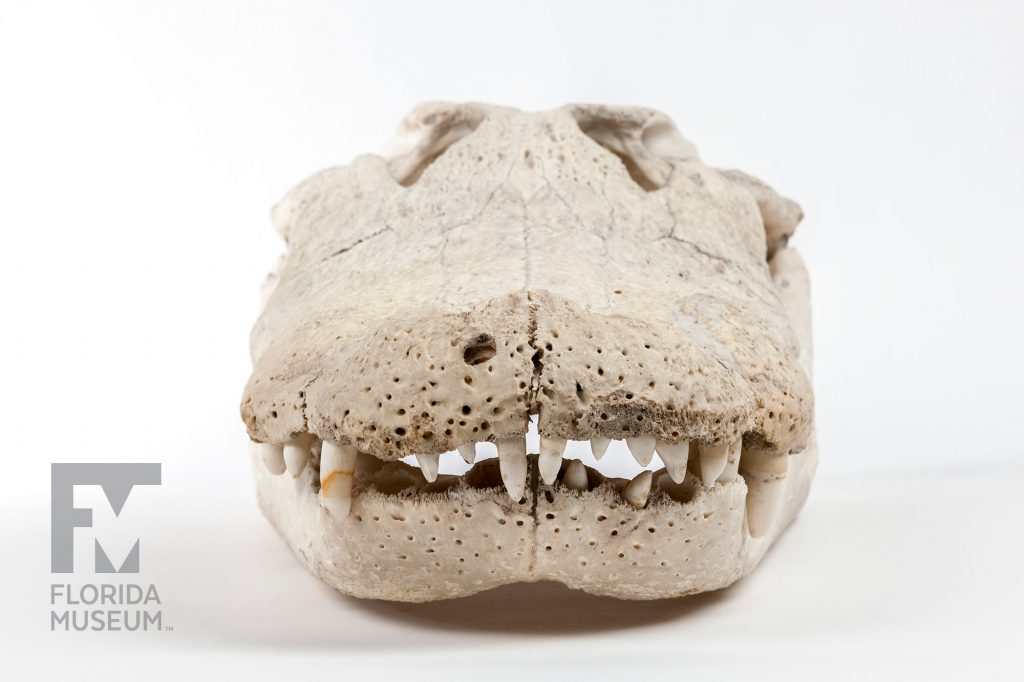Crocodilians first appear in the fossil record 83.5 million years ago, with 24 known species today (alligators, crocodiles, caimans and gharials). The Museum’s collection is used by researchers worldwide, including paleontologists who study crocodilian evolution.
Summary
Modern American Alligator Skull (Alligator mississippiensis)
From Newberry Co., South Carolina, 1976
Collection
Story
The Florida Museum of Natural History has one of the largest collections of amphibians and reptiles of any museum in the United States. And this includes a large collection of their skeletons as well. Being in the heart of alligator country, this collection includes a large number of skeletal specimens of American Alligators. The large size of this collection makes this a valuable resource for research.
We’ve been able to study variation in the structure of alligator skulls and the changes in skulls that occur as alligators grow. What we have learned from these studies has helped us better understand the differences we see in American Alligators and in their fossil ancestors.
Bones can tell stories. The long bones in the arms and legs of alligators can be used to determine the age of the specimen at death. If you cut a thin section through the middle of the femur, that long bone in the upper part of the hind leg, it’s possible to see rings in the bone development under a microscope. Each ring represents the growth that occurred during the warm, wet summer and each is distinct from the next because of reduced growth in the fall months followed by the winter dormant season. So, you can count these rings to estimate the age of the alligator, just as you can count the rings in the trunk of a tree.
This information learned from alligator bones has been used by biologists to estimate the age of individual dinosaurs, like T. rex, at the time of their deaths and to understand that dinosaurs became so big by growing very quickly for many years.
Kent Vliet
Coordinator of Laboratories, Biology Department*
Alligator and Crocodile Biologist
University of Florida
Exhibit
On display Sept. 23, 2017-Jan. 7, 2018, Rare, Beautiful & Fascinating: 100 Years @FloridaMuseum celebrated the Museum’s rich history. Each Museum collection was asked to contribute its most interesting items and share the stories that make them special. Though the physical exhibit is closed, this companion website remains online, providing an opportunity to experience the Florida Museum’s most treasured specimens.
Exhibit Area: Objects Tell Stories
Theme: For the Gator Good!
 Want to see more? Explore more than 300 breathtaking color photos of plants, animals, fossils and cultural heritage materials from the Florida Museum of Natural History’s collections in the award-winning book All Things Beautiful available from the University Press of Florida.
Want to see more? Explore more than 300 breathtaking color photos of plants, animals, fossils and cultural heritage materials from the Florida Museum of Natural History’s collections in the award-winning book All Things Beautiful available from the University Press of Florida.
*This title was accurate at the time the exhibit was on display in 2017. Please visit the department website to verify current staff and student information.


